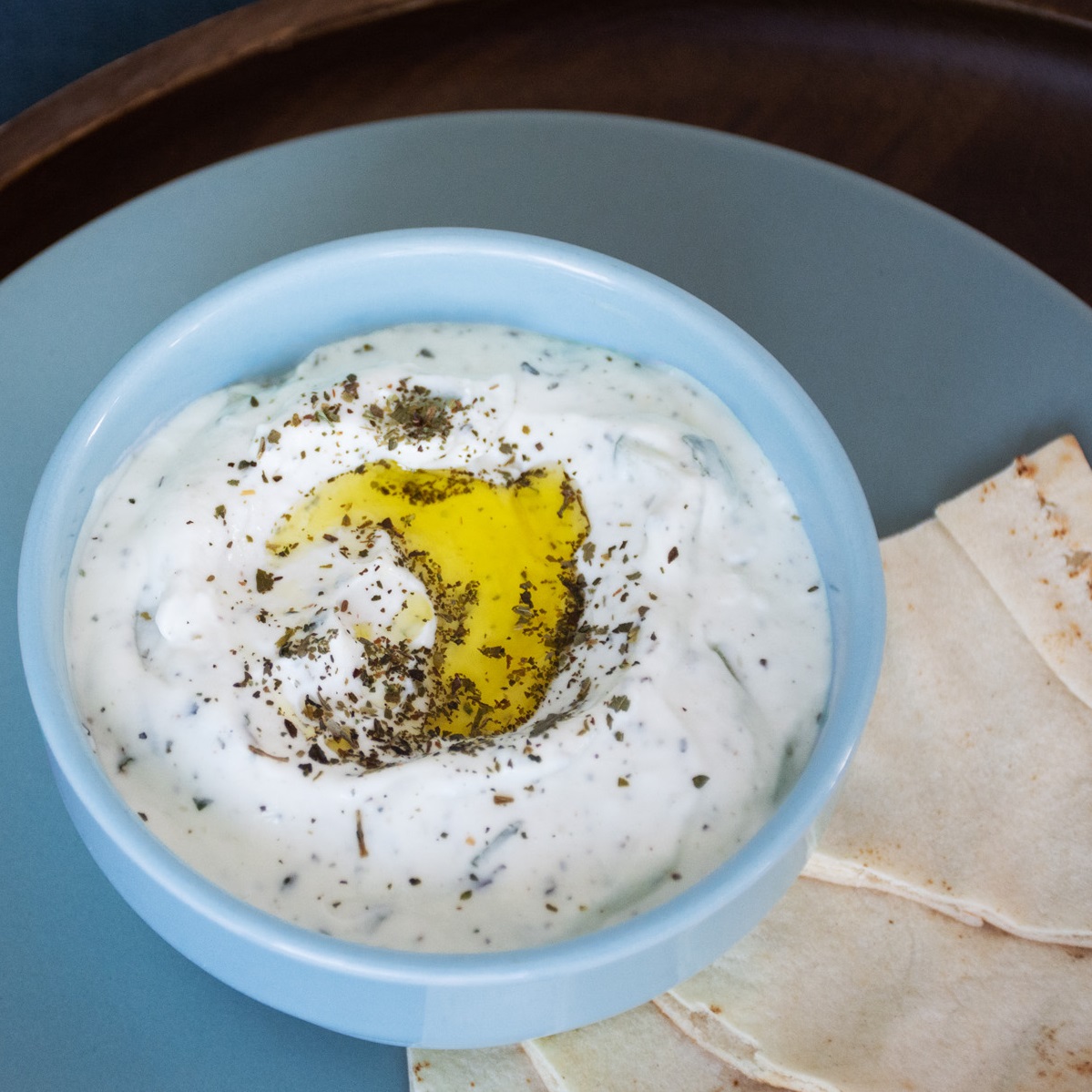In this comprehensive guide, discover how to achieve a perfect balance between different fatty acids, and find the best sources of fats to optimize your well-being and health.
Fats, long misunderstood, are now back at the center of many scientific and media discussions, and they are arousing keen interest among nutritionists and nutrition enthusiasts.
Indeed, after being demonized during the 80s to 2000s, they are now regaining their letters of nobility, because research tends to show that they play a fundamental role in our health.
✨
At the house of Libshop, we are specialized in the manufacture artisanal of mezzes, shawarma, falafel, Lebanese-inspired dishes and pastries for more than 10 years.
👉 Book your table at one of the Libshop restaurants in Paris
👉 Order Libshop for click & collect or delivery
✨
That's good, because they are completely in line with what is generally called - sometimes a little predictably - the Mediterranean diet, which gives pride of place to olive oil, fresh and mature cheeses, quality meat and fish, and famous spreads like hummus or eggplant caviar, which are offered on the menu of Libshop restaurants.
However, there are certain ratios to approximate when you want to reintegrate fats into your diet, whether for culinary pleasure or for health, and this is what we are going to discover in this new article from the Libshop Health Guide.

Why are fats important?
Fats are a concentrated source of energy. They provide the famous fat-soluble vitamins (A, D, E, K), and They are essential for the structure of our cells. They also participate to the production of hormones and the proper functioning of the nervous system.
To simplify as much as possible, fats provide both energy and "support". metabolic and hormonal absolutely essential for health and reproduction in particular, while carbohydrates (starch, cereals, and sugars) mainly provide energy.
However, at the end of the 20th century, there was a reduction in fat consumption based on nutritional recommendations that mainly advocated sugars and carbohydrates. Recently, these recommendations have been more or less called into question, and the public authorities are gradually reducing the recommended carbohydrate intake, for the benefit of fats and proteinsToday, the government's recommended intake of fat is 30 to 40% of total caloric intake, which was unthinkable just a few years ago.
However, a low-fat diet – and not to mention low-nutrient diet – is quite typical of the "modern" diet practiced more or less consciously in large urbanized cities, perhaps in reaction to the excesses of junk food in the 80s/90s. I had spoken in particular about the problem that could be posed by the "impoverished" food supply typical of metropolises., as opposed to the more traditional “dense” food, found in villages or countryside.
The problem is that, as always, we have demonized a family of foods as a whole, in this case fats, by throwing the baby out with the bathwater.
However, it is important to remember that Fatty acids are essential for the body, in the sense that the body cannot make them all itself.

When you permanently reduce your intake of fats, proteins and more generally calories too significantly, we risk exposing ourselves to a whole bunch of problems, including hormonal problems, drops in libido, a decrease in vitality and energy, and a tendency to "collapse" the metabolism, which is a symptomatic phenomenon of our modern societies.
This is why a new wave of nutritionists, particularly in North America, are now praising the merits of (healthy) fats and advocating their big comeback in the diet, whether via a Nordic diet (animal fat, oily fish, nuts, berries and vegetables) or a more "equatorial" or Mediterranean diet (animal fat, nuts, legumes, cheese, oily fish but also vegetable fats from olives, coconuts, avocados, etc.).
However, if fats come back to the forefront, Choosing the right fats is crucial, and try to distribute them optimally according to certain ratios that are very little known to the general public, because not all fats have the same effects on health, and there are different types of fatty acids that we will see just after.
This also applies to carbohydrates, which we now tend to demonize as a reaction, even though there are good and bad elements in this family of macronutrients, and quantities that need to be approached. A sweet dessert from time to time never killed anyone, and yet, as with fat in the past, sugar is now becoming a rather too easy scapegoat.

Within fats, the distribution of foods rich in fat is therefore an interesting consideration. Above all, not in a rigid way. but rather trying to approach ratios that are theoretically interesting for health, and which we feel are good for us in practice, especially during very repetitive meals, and not necessarily when we treat ourselves to fast food or a festive meal, of course. Indeed, it is everyday habits that give the most results, and not exceptional weekly or monthly deviations.

By improving your fat intake, you can sometimes hope to delay certain metabolic problems that can come with age, improve immunity, and sometimes reduce your waistline unexpectedly, because yes, contrary to popular belief, fats do not necessarily make you gain weight, but that is another subject that we may have the opportunity to come back to.
The ideal distribution of fatty acids as a percentage of caloric intake
There are several ways to estimate your intake of these different fatty acids to see if the distribution of the different fatty acids matches, and the first is to estimate them based on total caloric intake.
The estimation calculation may seem a little technical for those who know nothing about calorie matters, but don't panic, I'll explain how to roughly estimate this.
First, there are three broad categories of fatty acids:
-
Saturated fatty acids : present in animal products (meat, butter, cheese) and certain vegetable oils (palm oil, coconut oil). Although their consumption has been limited in the past, Some recent studies qualify this approach, emphasizing that their effect on heart health depends on their origin and the overall dietary context. In other words, saturated fats have a bad reputation, but their reputation is changing, because we are realizing, as I said above, that quality meat or good cheese containing a little saturated fat will be beneficial for health, contrary to what we may have believed in the past.
Recommended amount of saturated fat according to the new recommendations : about 10 % of daily calories. We will come back a little later on how to know if we are within the 10% of daily calories, without having to count to the gram. Be careful though: this recommendation applies in the case of a balanced diet, evenly distributed between proteins, carbohydrates and lipids, but in the specific case of a diet very low in carbohydrates (ketogenic or lowcarb), the intake of saturated fats can and should be revised upwards (up to 40% of total intake), since they will be used in particular as an energy substrate. But this is a special case.
-
Unsaturated fatty acids, which include:
- Monounsaturated fatty acids : found in olive oil, avocados, butter, canary, nuts and animal fats. They are beneficial for cardiovascular health, and are the typical fats of the Mediterranean diet in particular. There has never really been a debate about this category of fats, which has always been considered extremely healthy.
- Polyunsaturated fatty acids : mainly omega-3 (oily fish, flax seeds, chia seeds, nuts) and omega-6 (vegetable oils, eggs, cereals, oilseeds, etc.). They play an essential role in the prevention of inflammatory diseases and heart disease.
Recommended quantity : unsaturated fatty acids should represent approximately 35 % of daily caloric intake, with particular attention to the omega-3/omega-6 balance, we will come back to this.
-
Trans Fatty Acids : mainly derived from the industrial processing of vegetable oils, these fats are known for their negative effects on cardiovascular health. It is strongly recommended to avoid them. They are often found in industrial products.
Recommended quantity : as close to zero as possible.
The ideal distribution of fatty acids as a percentage of fat intake
The second method to estimate your fat intake and see if it corresponds to the recommended ratios is to estimate it in relation to the total fat provided by the diet, and not in relation to the total calories (including proteins, carbohydrates and lipids).
And in this case, here are the “optimal” ratios:
- Saturated fatty acids: approximately 25% of total lipids;
- Monounsaturated fatty acids: approximately 45 to 50 % of total lipids;
- Polyunsaturated fatty acids: approximately 20 to 25 % of total lipids, taking care to provide sufficient omega-3, and moderation in omega-6.
- Trans fats: ideally zero.
Now that we have said that, it is not easy to know if in our diet we have 25% of saturated fats, 45% of monounsaturated fats, etc.
Grams/kcalories conversion
Because be careful, when we say that unsaturated fatty acids should represent about 35 % of the daily caloric intake, or 45% of the total lipid intake, this does not mean that monounsaturated fats should represent 35 or 45% of the volume of the plate! It is not a question of bathing your food in olive oil, and stuffing yourself with pecans or avocados.
In fact, to know what 35% of a total caloric intake represents, you have to learn how to do the grams / kcal conversion, which I will detail for you now.

To know how much 50% of monounsaturated fatty acids represents in your diet, you must first know how to calculate what, for example, 10 grams of fat (for example olive oil or butter) represents in calories.
To do this, here is what you need to understand very quickly:
- 1g of fat is 9kcal;
- 1g of protein or carbohydrate is 4kcal;
- To simplify, we can remember that fatty foods "weigh" twice as much as proteins and carbohydrates. We understand here that fats are denser, and therefore take up less "space" on the plate.
It is estimated that an average adult in the prime of life generally consumes and expends around 2,000 kcal/day (while in reality, he should consume 3,000 kcal to be in full health, but that is another subject).

Well, to know if we are on target, we just need to multiply the number of grams of fat that we estimate in our diet by 9, in order to have our fat intake in kcalories (and not in grams!). And once we have this result in kcal, we just need to relate it to the number of total kcalories, and we will know if we are more or less on target!
Example
We said at the beginning of the article that general recommendations suggest that fats should represent between 30 and 40 % of total caloric intake. For a diet of 2,000 kcal per day, this corresponds to approximately 65 to 90 g of daily lipids (1 g of lipid = 9 kcal).
Once this overall intake is defined, the distribution of the different types of fatty acids can be done as follows:
- Saturated fatty acids : approximately 25 to 30 % of total lipids, or 16 to 27 g per day for a lipid intake of 65 to 90 g.
- Saturated fatty acids: approximately 25 to 30 % of total lipids either 16 to 27 g per day for a lipid intake of 65 to 90 g.
- Polyunsaturated fatty acids: approximately 20 to 25 % of total lipids, either 13 to 22 g per day, distinguishing:
- Omega-6: 15 to 20 g/day, present in vegetable oils (sunflower, corn, soybean).
- Omega-3: 2 to 5 g/day, to be preferred, found in oily fish, flaxseed oil, chia seeds and walnuts. The balance between omega-6 and omega-3 is crucial: a ratio of 5:1 maximum is recommended to avoid inflammation.
Previously, we saw that saturated fats, for example, could represent around 10% of total caloric intake.
Well, here too, we can do a very simple calculation to know if we are within the guidelines in terms of the recommendations:
10% * 2,000 kcal = 200 kcal
200 kcal / 9 = 22g
So we are back on our feet in terms of estimation, which was in a range of 16 to 27g.
In practice, how can you distribute your fats correctly?
In practice, you just need to roughly estimate the fats you consume, for example a knob of butter with an omelette in the morning, a tablespoon of olive oil with your salad at lunch, the fats coming from meat if you eat it for example, the fats from a snack like dark chocolate or nuts, and the fats inherited from a slice of salmon, or any other fat intake in the evening.
Knowing that:
- Saturated fats are found mostly in butter, dairy products, meat, and coconut oil;
- Monounsaturated fats are found in olive oil, avocados, nuts, and some meats like duck;
- Omega-6 fats are found in most foods in our diet;
- Omega-3 fats in fish, seafood, flaxseeds and chia seeds.
And if we don't feel like calculating, we simply need to remember roughly that:
- Monounsaturated fats (olive oil, avocados, nuts, duck) should represent the majority of fat intake;
- Saturated fats the second part of the intake (meat, butter, cheese, coconut oil, animal fats);
- Omega-6 polyunsaturated fats the third part of the intake (vegetable oils to limit, animal fats, nuts, oilseeds);
- Omega-3 polyunsaturated fats are the last but not least essential part of the intake (mainly oily fish and seafood).


Example of a day in the Mediterranean diet with an exemplary distribution of fatty acids
Examples are sometimes more telling than long theoretical explanations, so here is an example to give an idea of what a "healthy" day could be in terms of fatty acid distribution. With practice, you will see that it is often easy and intuitive to be on target, because most raw foods used in artisanal recipes respect this distribution, which is only the result of our adaptation to our environment over the millennia.
Breakfast
- 2 slices of wholemeal bread with raw butter (5 g) 🧈 (contribution of natural saturated fatty acids)
- 1 egg 🥚 (good fats and proteins)
- 1 handful of nut (30 g) 🌰 (rich in omega-3 and monounsaturated)
- 1 tea or coffee without sugar ☕
✅ Lipids:
- 10 g monounsaturated fats (nuts, butter)
- 6 g of saturated fat (butter, egg)
- 5 g of omega-3 (nuts)
Lunch
- Chicken breast (150 g) 🍗 (lean protein with some unsaturated fat)
- Raw vegetable salad (tomatoes, cucumbers, onions) 🥗
- Seasoned with olive oil (1 tbsp) (source of monounsaturated fatty acids)
- A few flax or chia seeds (1 tbsp) (essential omega-3)
- Brown rice (100 g cooked) 🍚 (complex carbohydrate intake)
- 2 tbsp. hummus (with olive oil) 🥣 (source of unsaturated lipids and fibers)
✅ Lipids:
- 20 g monounsaturated fat (olive oil, hummus)
- 3 g saturated fat (chicken)
- 4 g of omega-3 (flax seeds)
Snack (optional depending on hunger)
- 1 whole natural yogurt 🥄 (moderate intake of saturated fat and protein)
- 1 square of dark chocolate 85 % 🍫 (good antioxidants and some monounsaturated fat)
- 1 handful of almonds (20 g) 🌰 (contribution of monounsaturated fatty acids)
✅ Lipids:
- 10 g monounsaturated fats (almonds, dark chocolate)
- 5 g of saturated fats (yogurt, chocolate)
Dinner
- Grilled salmon (120 g) 🐟 (rich in omega-3 and protein)
- Steamed green vegetables 🥦 (fiber and micronutrient intake)
- 1 tbsp.olive oil to season 🫒
- 1 slice of wholemeal bread 🍞 (for slow carbohydrates and fiber)
✅ Lipids:
- 12 g monounsaturated fat (olive oil)
- 3 g saturated fat (salmon)
- 4 g of omega-3 (salmon)
Lipid intake assessment (about 75-80 g)
- Monounsaturated: ~45 g (olive oil, almonds, hummus, dark chocolate)
- Saturated: ~18 g (butter, yogurt, meat, chocolate)
- Omega-3: ~13 g (nuts, flax seeds, salmon)
- Omega-6: ~10-12 g (olive oil, hummus)
- Trans: 0 g (day without processed products)
We see through this example that the distribution considered ideal in fatty acids is achievable, but we should not make it an obsession either. It can happen sometimes to skip meals, to eat something that is not optimized for health, but it does not matter, the idea is simply to understand the general theory and to get closer to it when we can, with a goal of health and longevity.
Furthermore, it is important to remember that when it comes to fats and proteins, digestion time is a factor to take into account, and the more energy-dense a food is (fatty meat, butter, cheese), the more appropriate it will be not to consume them late in the day.
In other words, the more saturated a fat is, the more stable and compact it is, and the longer it will take to metabolize (with the exception of coconut oil, which is a separate saturated fat).
Saturated fatty acids, in particular long chain (like those from meats and dairy products), require more digestive work because they are less soluble in water and must be well emulsified by the bile.
Fatty acids polyunsaturated, often in liquid form at room temperature, are more rapidly incorporated into digestive micelles and absorbed.

Beyond the theoretical ratios, we can recall the importance of sufficient protein intake, which we have already discussed in this article, and increasing if possible the intake of omega-3 which tend to be anti-inflammatory (human beings having often evolved on the edge of the coasts).

Commitment at Libshop
At Libshop we try to respect these healthy eating standards, making sure to always provide a sufficient amount of protein (marinated meats, vegetarian falafels, legumes, etc.), an interesting distribution of fatty acids (olive oil, hummus, tzatziki, etc.) and the right amount of carbohydrates for energy without overdoing it (basmati rice, bread, legumes).

We also work on desserts that are more or less gourmet, more or less sweet, but always with raw products, without artificial flavor enhancers, without preservatives, and without products pre-processed by the industry.



